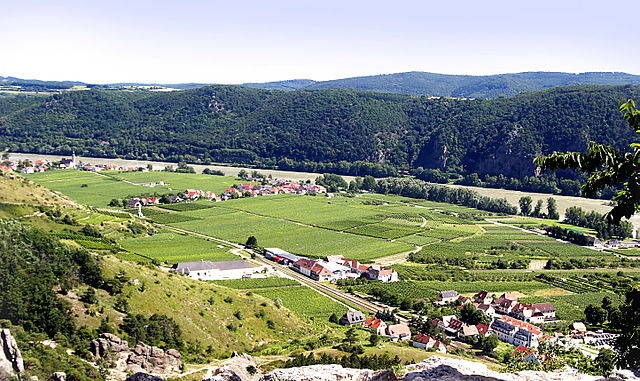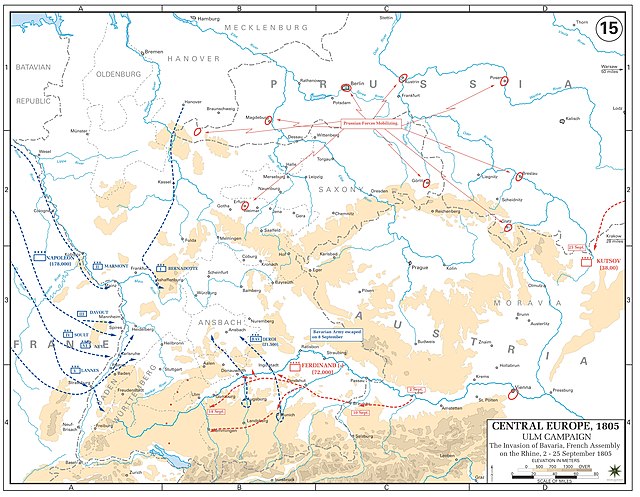The Battle of Dürenstein or the Battle of Krems, on 11 November 1805, was an engagement in the Napoleonic Wars during the War of the Third Coalition. Dürenstein, Austria, is located in the Wachau valley, on the river Danube, 73 kilometers (45 mi) upstream from Vienna, Austria. The river makes a crescent-shaped curve between Dürnstein and nearby Krems an der Donau, and the battle was fought in the flood plain between the river and the mountains.
Marshal Mortier at the battle of Durenstein in 1805, Auguste Sandoz
Gen. Mack and his staff surrender the Ulm fortress. Painting by René Théodore Berthon
Dürenstein, far left, lies on the end of the mountain promontory that extends to the river bank. The Danube river (flowing left to right) curves around the promontory, passes the Loiben plain (with Oberloiben and Rossatz to the left and Unterloiben to the right) to Stein and Krems, on the far right. The bridge across the river at Krems had been destroyed. The curve of the river around the promontory meant the French, in Dürenstein, did not have a direct line of sight from one end of the battlefield to the other. The battle occurred on this plain, between Dürenstein and Krems.
The French occupied the vineyards in the floodplain and were surrounded by Russian troops emerging from the defiles of the mountains. Another column of Russians approached Dürenstein from the south.
War of the Third Coalition
The War of the Third Coalition was a European conflict lasting from 1805 to 1806 and was the first conflict of the Napoleonic Wars. During the war, France and its client states under Napoleon I opposed an alliance, the Third Coalition, which was made up of the United Kingdom, the Austrian Empire, the Russian Empire, Naples, Sicily, and Sweden. Prussia remained neutral during the war.
War of the Third Coalition
In The Plumb-pudding in danger (1805), James Gillray caricatured overtures made by Napoleon in January 1805 for a reconciliation with Britain.
The strategic situation in Europe in 1805 before the start of the Ulm Campaign and the war
The French concentrated around the Rhine from early to mid-September. 210,000 troops of the Grande Armée prepared to cross into Germany and encircle the Austrians.








